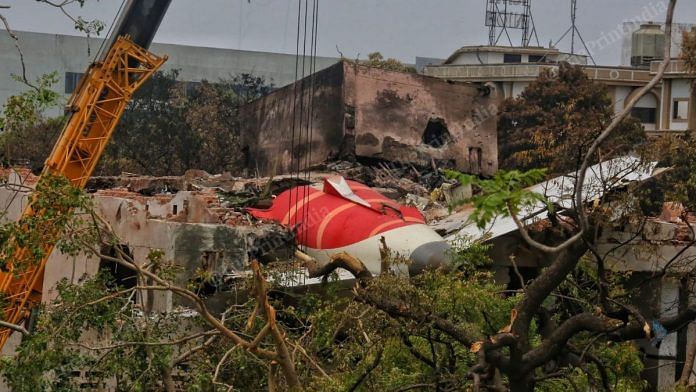New Delhi: Exactly a month after the Air India 171 crashed in Ahmedabad, the Aircraft Accident Investigation Bureau (AAIB) released its preliminary report late Friday night, stating that moments after take-off, the fuel switches transitioned from the ‘run’ to ‘cut-off’ position just one second apart.
The cut-off transition refers to the fuel supply to the aircraft’s engines being cut, which could be one of the key factors behind the tragedy. On 12 June, the London-bound 787-8 Dreamliner crashed less than a minute after take-off. Of the 242 people on board, 241 were killed. The total death toll stands at 275.
As per International Civil Aviation Organization (ICAO) standards, India was required to release a preliminary report within 30 days of the accident. However, preliminary reports do not conclusively state the probable causes or final findings of aircraft accidents. These are detailed only in the final report, which may take months or even years to be completed.
The report also mentions that the cockpit voice recording tells that one of the pilots had asked the other pilot why he cut off to which the latter responded saying that he did not do so.
“When fuel control switches are moved from CUTOFF to RUN while the aircraft is in flight, each engine’s full authority dual engine control (FADEC) automatically manages a relight and thrust recovery sequence of ignition and fuel introduction,” the report says.
According to the report, within seconds, the switches for both engines were moved from CUTOFF back to RUN—suggesting that, in the final moments before the crash, the pilots attempted to save the flight from crashing, based on data from the Enhanced Airborne Flight Recorder (EAFR).
Dreamliners and other modern commercial aircraft are designed to take off and remain airborne on a single engine, and this is something that pilots are trained to handle.
The report mentions that Engine 1’s core deceleration stopped, reversed and started to progress to recovery. Engine 2 was able to relight but could not arrest core speed deceleration and re-introduced fuel repeatedly to increase core speed acceleration and recovery. However, seconds later, the EAFR recording stopped. Just before, the pilot had given a ‘May Day’ call and the ATC did enquire about it. It did not get any response, but observed the aircraft crashing outside the airport boundary.
The flight was operated by Captain Sumeet Sabharwal, a Line Training Captain with 8,200 hours of flying experience, assisted by First Officer Clive Kundar, who had logged 1,100 flying hours.
The report also mentions that the CCTV footage obtained from the airport showed Ram Air Turbine (RAT) getting deployed during the initial climb, immediately after lift-off. RAT is typically deployed in emergency situations owing to loss of power in both engines or total electronic or hydraulic failure.
The report also mentions a Federal Aviation Administration (FAA) Special Airworthiness Information Bulletin regarding the potential disengagement of the fuel control switch locking feature in 2018. This was issued after reports from operators of Model 737 airplanes that the fuel control switches were installed with the locking feature disengaged.
“The airworthiness concern was not considered an unsafe condition that would warrant airworthiness directive (AD) by the FAA,” the report said, adding that Air India said that the suggested inspections were not carried out as the SAIB was advisory and not mandatory.
It also mentions that no significant bird activity was observed in the vicinity of the flight path and that aircraft started to lose altitude before crossing the airport perimeter wall.
(Edited by Zinnia Ray Chaudhuri)
Also read: Air India crash: AAIB submits report after initial findings, probe on in line with ICAO norms






